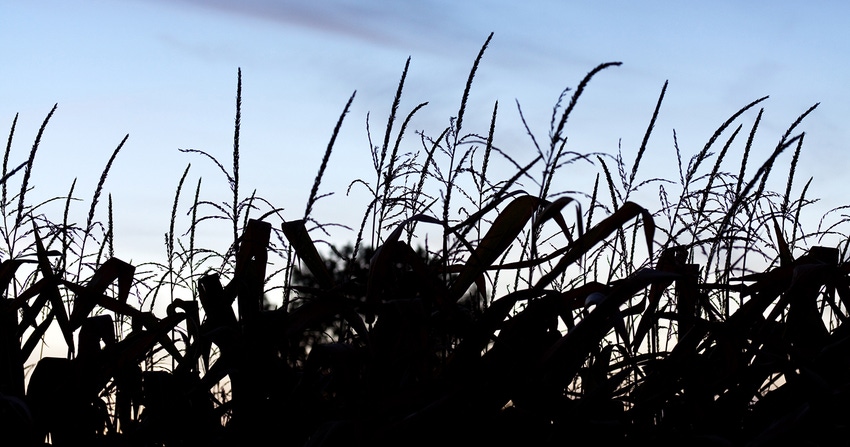July 18, 2022

It took just hours for a derecho to wreak crop and property damage in at least four Midwestern states, but it may be weeks before its impacts on the corn and soybean markets are known.
On July 5, a derecho or straight-line wind storm swept Iowa, Nebraska, Minnesota and South Dakota, with winds exceeding 90 miles per hour. According to the National Weather Service, a derecho is a windstorm that extends for at least 240 miles, with winds of at least 58 miles per hour.
Scott Stiles, extension economist for the Division of Agriculture, said while several of the states affected by the derecho are key soybean and corn producers, representing millions of acres of each crop, the effects on markets have yet to be felt. According to a June 30 USDA Grain Stocks report, U.S. corn stocks are up 6% from 2021 and soybean stocks are up 26%, so yield impacts will likely be delayed.
Globally, grain futures markets have been volatile during June and July, rising and plunging on a nearly daily basis, on par with broader market volatility. On Tuesday, November soybean futures jumped to nearly $13.99 a bushel, December corn deliveries jumped to more than $6.25 a bushel and September wheat deliveries jumped more than 56 cents to about $8.93 a bushel. Wednesday, all three commodities lost about half those gains. Thursday, things rose again.
Billion-dollar event
The July derecho followed on the heels of a June 13 derecho that has been classified by the National Weather Service as a billion-dollar event for the damage it caused from Wisconsin to Ohio.
Jason Kelley, extension wheat and feed grains agronomist for the University of Arkansas System Division of Agriculture, said that while a storm of this nature is never good, the July derecho may have come early enough to avoid doing the maximum possible damage to corn and other crops, especially compared to a similar storm that caused more than $7.5 billion in crop damage in 2020.
“My impression is that this storm was not as bad,” Kelley said. “I heard someone say that this year the storm was a couple weeks earlier and the corn didn’t have the weight of developed ears and that may have reduced the over crop lodging this year compared to what was seen previously.
“The dry weather across Arkansas and several other states may be a bigger issue,” he said.
Drought across Arkansas
According to a July 11 Crop Progress and Condition report from the U.S. Department of Agriculture, soil moisture across much of Arkansas remained in the 20% to 30% range, with isolated areas seeing still dryer conditions.
Most of Arkansas has been dealing with steadily rising temperatures, both in terms of daytime highs and overnight lows. Although the state’s central counties enjoyed a brief storm burst Tuesday night, very dry weather conditions will largely persist. As of Wednesday, the Arkansas Forestry Commission had issued burn bans for 51 of Arkansas’ 75 counties, with most of the counties outside the ban in the state’s southeastern quadrant.
Source: University of Arkansas System Division of Agriculture, which is solely responsible for the information provided and is wholly owned by the source. Informa Business Media and all its subsidiaries are not responsible for any of the content contained in this information asset.
You May Also Like




